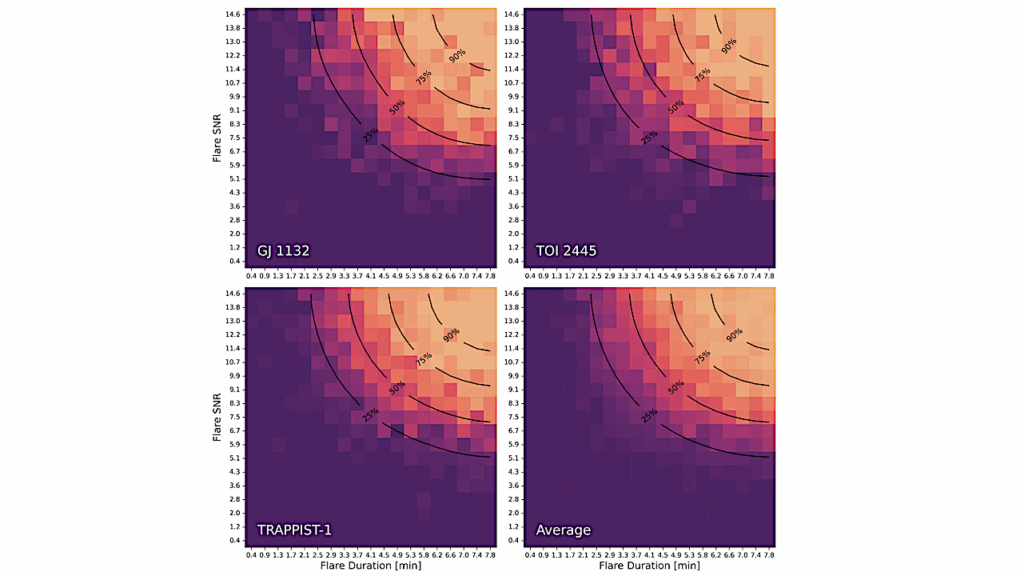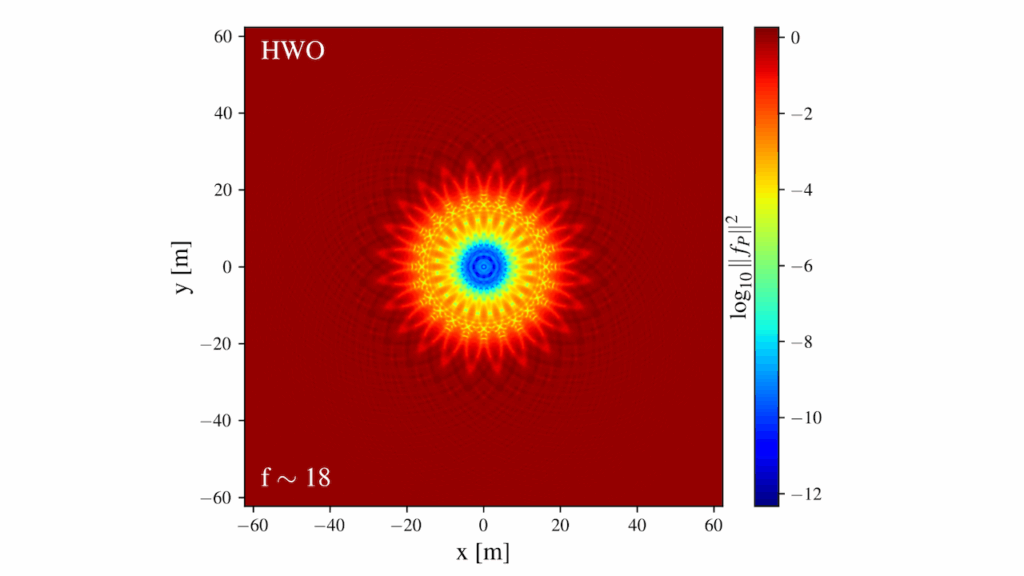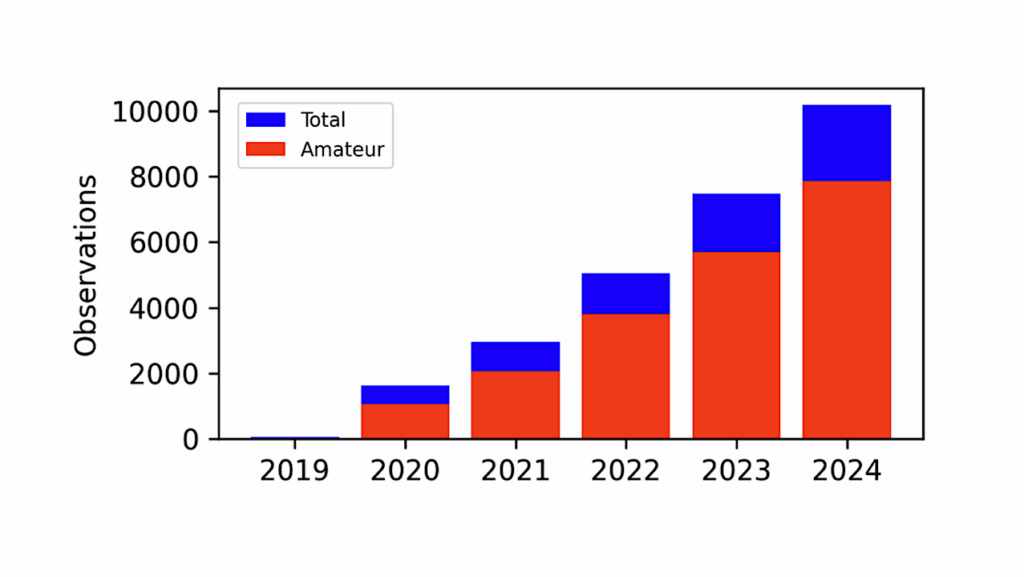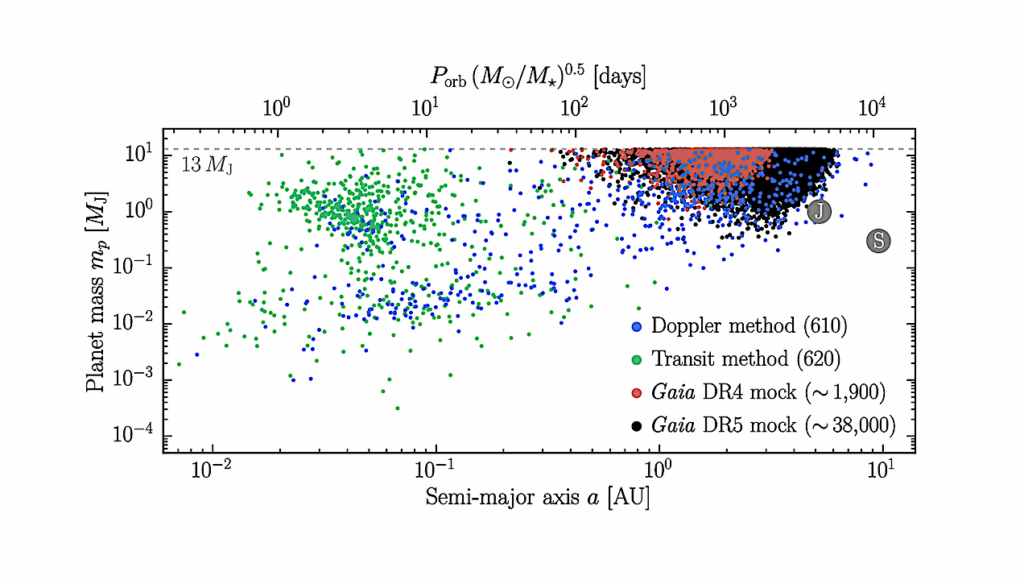The Visibility of the Ōtautahi-Oxford Interstellar Object Population Model in LSST
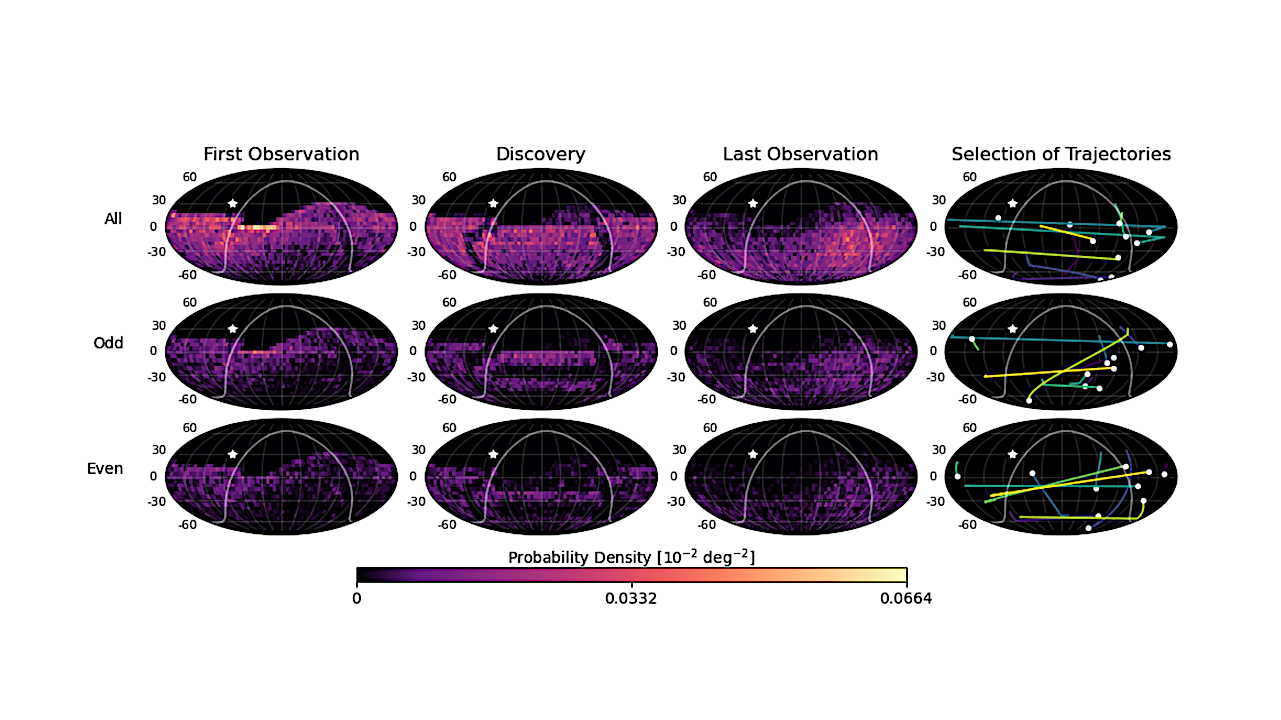
With a new probabilistic technique for sampling interstellar object (ISO) orbits with high efficiency, we assess the observability of ISOs under a realistic cadence for the upcoming Vera Rubin Observatory’s Legacy Survey of Space and Time (LSST).
Using the Ōtautahi-Oxford population model, we show that there will be complex on-sky structure in the pattern of direction and velocity revealed by the detected ISO population, with the expected enhanced northern flux complicating efforts to derive population parameters from the LSST’s predominately southern footprint. For luminosity functions with slopes of 2.5≤qs≤4.0, the most discoverable ISOs have Hr≃14.6−20.7; for previously estimated spatial densities, between 6 and 51 total ISOs are expected.
The slope of the luminosity function of ISOs will be relatively quickly constrained. Discoveries are evenly split around their perihelion passage and are biased to lower velocities. After their discovery by LSST, it will be rare for ISOs to be visible for less than a month; most will have mr≤23 for months, and the window for spectroscopic characterization could be as long as two years.
These probabilistic assessments are robust against model or spatial density refinements that change the absolute numbers of ISO discoveries.
Rosemary C. Dorsey, Matthew J. Hopkins, Michele T. Bannister, Samantha M. Lawler, Chris Lintott, Alex H. Parker, John C. Forbes
Comments: Submitted to PSJ, comments welcome!
Subjects: Earth and Planetary Astrophysics (astro-ph.EP); Astrophysics of Galaxies (astro-ph.GA)
Cite as: arXiv:2502.16741 [astro-ph.EP] (or arXiv:2502.16741v1 [astro-ph.EP] for this version)
https://doi.org/10.48550/arXiv.2502.16741
Focus to learn more
Submission history
From: Rosemary Dorsey
[v1] Sun, 23 Feb 2025 22:53:10 UTC (7,312 KB)
https://arxiv.org/abs/2502.16741
Astrobiology,


